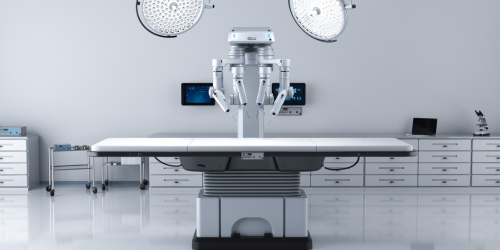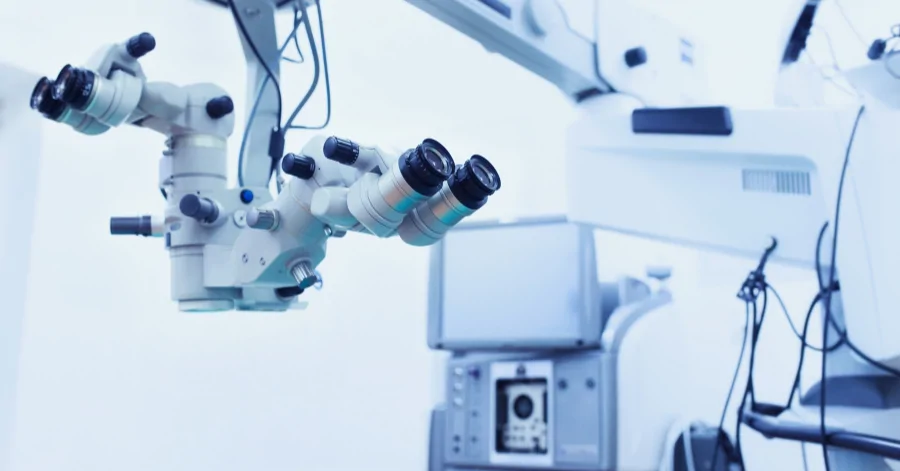
The medical technology industry is an important part of the health care sector, providing various technologies such as pacemakers, implants, and imaging instruments. After the Covid-19 pandemic the MedTech sector is rapidly growing because of investments, new trends and innovations. In 2024, the MedTech industry is worth 521 billion euros, an increase of almost 100 billion euros compared to 2021.
From wearable devices to AI solutions, new trends in MedTech are shaping the landscape of healthcare and paving the way for more efficient, personalised, and accessible medical services. This new advancement brings a lot of opportunities for experts and engineers who want to work in the health care industry.
In this article, Associate Director Andrew Barrow delves into some of the most significant emerging trends in MedTech that will transform the future of healthcare and the job career opportunities that come along with these trends.
Trends
Wearable Health Devices
One of the most notable trends in MedTech is the development of wearable health devices. Deloitte Global predicts that in 2024 440 million units will be shipped worldwide, which is an increase of 120 million devices compared to 2022. These devices, ranging from smartwatches to fitness trackers, are equipped with sensors that can monitor vital signs, track physical activity, and even detect abnormalities in real-time such as atrial fibrillation.
With wearable health devices such as smart watches and smart patches consumers can not only track their sport performances, but also for example their heart rate. Moreover, healthcare providers can leverage this data for remote patient monitoring, early disease detection, and personalized treatment plans.
The shift from a sport accessory to an important health device allows continuous health assessment. Their main benefit is that they provide healthcare providers with real-time health data and detailed information on their patient’s health conditions. IoMT (Internet of Medical Things) enables a significant change in patients' awareness.
Telemedicine and Remote Patient Monitoring
Telemedicine are remote clinical services, that offer real-time communication between a patient and a healthcare provider. In 2019 only 11 percent American consumers were using telemedicine. Nowadays that number has risen to 46 percent, thanks to the pandemic. The use of telemedicine and remote patient monitoring solutions has increased because of the need for convenient and accessible healthcare services, especially in remote or underserved areas.
Telemedicine platforms allow patients to consult with healthcare professionals virtually, facilitating timely diagnosis, treatment, and follow-up care. Patients can telephone or videocall for consultations if they don’t need to go the hospital. Think about follow-up consultations. It’s also cost-efficient because patients don’t need to pay transport or any other extra expenses.
Additionally, remote patient monitoring technologies enable healthcare providers to remotely monitor patients' health status and intervene proactively when necessary, reducing the need for frequent hospital visits and improving patient outcomes.
AI-Applications
Artificial intelligence (AI) is increasingly being integrated into MedTech solutions to enhance diagnostic accuracy, streamline clinical workflows, and support healthcare decision-making. AI-algorithms can analyse vast amounts of structured and unstructured medical data, including imaging scans, lab results, and patient records, to identify patterns, detect anomalies. AI-powered diagnostic tools hold the potential to improve the speed and accuracy of disease diagnosis, leading to earlier interventions and better patient outcomes.
Because AI-tools can analyse a lot of different data, scientists use these this information to enhance decision-making. That also means that AI is not enough to improve health care but is rather a toolbox to help AI-experts and health care staff. AI and trained employees go hand in hand to support and improve health solutions and that’s why companies should invest in AI experts.
A third advantage of AI in the medical technology industry is patient safety. AI can detect errors, manage drug delivery, and stratify patients. It assists in reducing health risks and identifies any other risks and diagnoses, increasing patient safety. That means that medical treatments are becoming safer, more efficient, and personalised.
Remote Surgery and Robotic-Assisted Procedures
Advancements in robotics and minimally invasive surgical techniques have paved the way for remote surgery and robotic-assisted procedures. Remote surgery or telesurgery makes it possible for surgeons to perform surgical interventions on patients located in different geographical locations with high-speed internet connectivity and robotic technology. That way doctors can work together without the high costs of transportation.
Robotic-assisted surgical systems offer precision, dexterity, and enhanced visualisation, allowing surgeons to perform complex procedures with greater accuracy and efficiency. These innovations hold promise for reducing surgical complications, minimizing recovery times, and expanding access to specialised surgical care. Another big advantage is that surgeries can take place in rural areas, war zones or other difficult places.
Bioprinting for organ transplants
Bioprinting is a new technology that follows a CAD file and lays down layers, using a biocompatible plastic that functions as a scaffold. During the layering human cells of the patient’s organ are seeded. When the print is done, the organ is transferred to an incubation chamber, where the cells can grow. After enough time the organ is then implanted in the patient.
In the future, hospitals will be able to 3D-print organs instead of putting patients on long transplant lists. Bioprinting will help reduce the organ shortage, which will help thousands of lives everywhere. Although bioprinting is making its way in the medical technology the new technology is still in the development phase, which means that traditional organ transplants will not be replaced in the next few years.
Virtual Reality (VR) and Augmented Reality (AR) in Healthcare
Virtual reality (VR) and augmented reality (AR) technologies are increasingly being utilized in healthcare for medical training, patient education, and therapeutic purposes. It is estimated that the VR and AR market will reach 2.4 billion dollars by 2026. VR simulations allow medical professionals to practice surgical procedures, anatomical dissections, and complex medical scenarios in a realistic virtual environment, enhancing their skills and confidence. It can also guid rehabilitation exercises and address chronic pain.
AR applications overlay digital information onto the real world, offering surgeons real-time guidance during procedures and assisting healthcare providers in visualising patient anatomy and pathology. VR and AR have the potential to enhance medical education, improve surgical outcomes, and enhance patient engagement and understanding.
Careers in MedTech
Because of new projects such as bioprinting or implementing AI for robotic surgeries, engineers with the right expertise and other experts have a bright future within the health care industry. The industry is still growing, introducing new inventions every year, which means that the MedTech industry is a stable career path with professional opportunities. These new trends can also boost companies profit and reputation, but to achieve that goal the best MedTech experts are required. With a booming industry and a shortage of engineers and experts, hiring a specialised recruitment organisation will benefit your company.
In conclusion, the landscape of MedTech is evolving rapidly, driven by technological innovations, changing healthcare needs, and a growing focus on patient-centric care. The emerging trends in MedTech discussed above represent exciting opportunities to revolutionise healthcare delivery, improve patient outcomes, and enhance the overall quality of care. As these trends continue to mature and gain widespread adoption, they hold the potential to shape the future of healthcare and usher in a new era of innovation and advancement in medicine.
Progress your life with Amoria Bond
Amoria Bond is an award-winning recruitment organisation with multiple years of recruitment expertise within the MedTech industry. Our specialised MedTech teams can help you find your next career opportunity. Our MedTech recruiters listen to your needs and skills to place you in the right job within the right company.
We offer a personalised recruitment by tailoring our strategies to your hiring needs. Contact our teams today to find out more about how we can help you.





